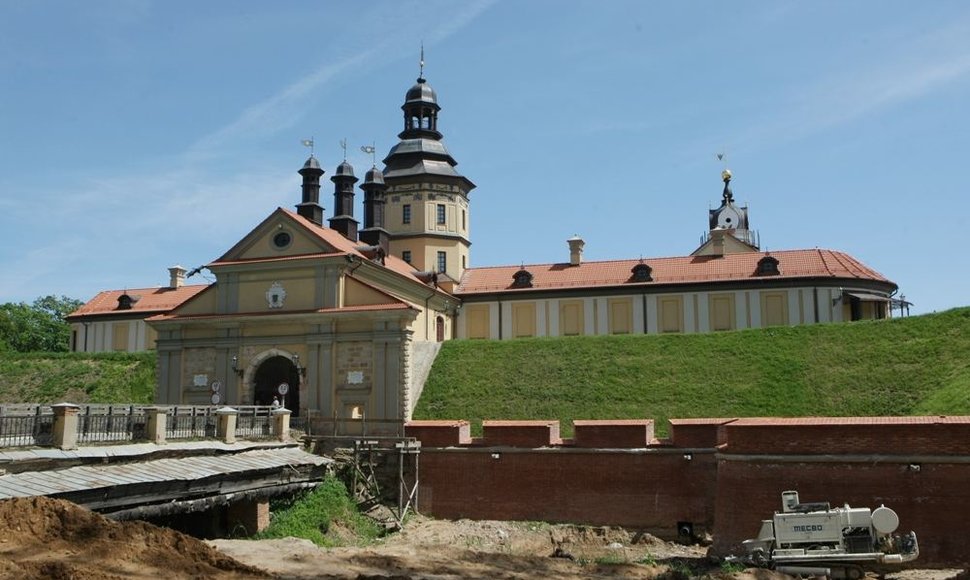One thing that is known is that the castle was built by Nicholas Christopher Radziwill “the Orphan.” The fact is memorialised in a plate over the entrance, bearing a date – 7 May 1583. The Radziwills, one of the most influential noble families of the Grand Duchy of Lithuania, took charge of Nesvizh in the 16th century and did not leave it until 1939, when the Soviets came.
Popular legend
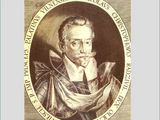 |
| Vario raižinys, dailininkas L.Kilianas./Nicholas Christopher Radziwill "the Orphan" |
Nesvizh Castle once stored immense wealth, particularly in late 18th century. Its noble residents lived in immense luxury – many a written source mention that the Radziwills were creditors even to the French monarchs.
Portraits by great masters, sumptuous porcelain, rare manuscripts, marshal and hetman regalia, family silver and gold – all this and much more was housed between castle walls. The Radziwills supported artists and court theatre companies.
The most popular legend recounted by tour guides to modern visitors of the castle has it that the treasury contained 60 poods (1 pood – about 16 kilograms) of gemstones. They were accumulated over centuries and masters of the castle had no right to sell them, give them away as dowry, or take them outside Nesvizh.
Even during difficult times of war, fire, and other disasters, the treasure needed to be store in a safe hiding place, the location of which was only known to the master of the castle and his closest confidant. The hiding place might gave been built in one of the underpasses that are remain sources of legends in Nesvizh even today.
Historical sources
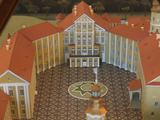 |
| Kęstučio Vanago/BFL nuotr./Scale model of Nesvizh Castle |
Who has seen all this treasure? Was it really there?
Duke Repnin, Russian envoy who was a courtier of Stanislaw August Poniatowski, the last monarch of the Polish-Lithuanian Commonwealth, wrote in his report to Russian empress Catherine II: “The king called on Radziwill in Nevizh. After a startling firework and dinner for three hundred people, the king descended to the castle dungeon and saw bars of gold stacked up to the ceiling. The gold measured in hundreds of poods, a wealth of goldware, and twelve apostles made of this metal and silver, encrusted with gems.”
Imperial Russia's Foreign Minister Adam Jerzy Czartoryski admiringly wrote about the Radziwill treasures in 1804-1806: “Nesvizh Castle is rich. Eighteen halls contain fixings worth five or ten million ducats. Valuable collections of armour, books, diamonds. But nothing exceeds in value the 'Twelve Apostles' collection: five of them are made of pure gold and encrusted with jewels.”
 |
| Kęstučio Vanago/BFL nuotr./Radziwill coat of arms |
In volume 9 of the treatise “Russia. The Full Geographical Description of Our Country,” there is a passage: “There is, among other things, a story that here [in Nesvizh] were hidden massive silver sculptures of the twelve apostles, an opulent archive with letters of many a European monarch, also important historical documents of Lithuania, Poland. Besides, there were diplomas, documents, privilege letters, bulls of the true union act and Pope Urban XII. Where it all disappeared is unknown.”
Gift from the Roman Pope
Where did these treasures come from? Historians believe that the twelve silver apostles could have arrived in Nesvizh from Constantinople in early 17th century. It was a gift to Nicholas Christopher Radziwill from the Roman Pope himself.
Many valuables were handed to Nesvizh by the king of Poland Jan Sobieski who beat Turks in a battle near Vienna and seized a carriage full of treasures.
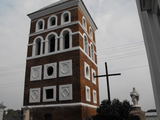 |
| M.Jankutės nuotr./Nesvizh church belltower |
It contained many exotic items – including a tent of the Turkish Pasha with Muhammad's flag – that inspired awe in everyone who got to see them. Among other outstanding objects was an exceptionally beautiful Renaissance table.
Hidden from thieves
Thieves have made numerous attempts to steal the apostle sculptures. The Radziwills therefore decided to hide the originals and put skilfully made wax copies with counterfeit gems in their stead in the Blue Hall. Rumours had it that next to wax figures of the apostles, there were figures of thieves who tried to steal them. According to the legend, the thieves' heads sculpted in wax were complete with their real hair.
Nesvizh Castle treasures acquired particular renown in late 18th century, when the estate was run by Pane Kochanku (the Lovely Seigneur) – nickname given to Karol Stanislaw II Radziwill.
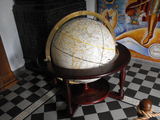 |
| M.Jankutės nuotr./ |
Some sources describe that despite assertive prohibitions to take sculptures outside Nesvizh, Pane Kochanku would still carry some of them round Europe and occasionally, when finance pressed, put up St Luke or St Matthew to get some cash. But he would always buy them back.
Vanished without trace
After Pane Kochanku's death, the entire wealth was inherited by his nephew Dominic Radziwill. The last Radziwill of the Nesvizh line served to the Russian Emperor, but ran over to Napoleon's side during 1812 war with France. He gave in to Napoleon's promises to restore the Polish-Lithuanian Commonwealth and joined the French on their campaign to Moscow.
After Napoleon's defeat, prince Dominic had to flee too. He could only stop at his castle for a few hours – just enough time to make arrangements with his steward to have the treasure hidden in a secret place. Only two people knew the location – Dominic himself and his steward.
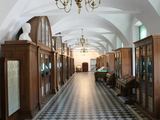 |
| Kęstučio Vanago/BFL nuotr./Radiwills' library |
The master was forced to rush to Vilnius, so he ordered the rest of his possessions – bar the treasure – to be put into carriages and sent towards Vilnius. The steward, however, could not execute the orders. Russian troops entered Nesvizh and the loaded carriages were steered in the opposite direction.
The steward risked sending a secret messenger to Vilnius to warn the prince. Unfortunately, Russians captured and executed the messenger. They also arrested the steward, who refused to give away where the treasure was even under torture – he was hanged in the end. The second confidant of the secret, Dominic himself, was soon lethally injured in a battle and taken to Paris, where he died.
Unrewarded treasure hunt
Russian troops, headed by Admiral Chichagov, began their search for the Radziwill treasure in the beautiful Alba Park. The entire grounds were ploughed through, but nothing was found.
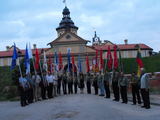 |
| Margarita Jankutė/Lithuanian flags against the background of Nesvizh Castle |
Germans, too, have tried looking for it on numerous occasions – during both World War One and World War Two. A special sniper squad took up the mission between 1941 and 1944. Many valuable objects were discovered in the process – all sent to Germany – but no sign of the main treasure.
It must be noted that some of the valuables were discovered in Nevizh by the French in 1812 (it was added to the list of Napoleon's spoils). As for the rest of the treasure – well, it might still be hidden somewhere in Nesvizh.
According to Belorussian historians, the twelve apostle figures are something more than historical fancy. They are listed in Nesvizh inventory books, but only in those dating before 1809. There are no entries after that date. Modern excavation works have born no results either.
The Radziwill family
The Radziwills are a noble family of the Grand Duchy of Lithuania that came into prominence in 15th century and retained its influence until the end of the Polish-Lithuanian Republic in late 18th century. The Radziwills were so powerful and influential that they were often dubbed the uncrowned monarchs of Lithuania.
The Radziwills were also one of the wealthiest families in Europe. Their possessions included 23 castles, 426 towns, 2,032 estates, 10,053 villages. Since 1547, the Radziwills were the only Lithuanian noble family to have received the title of Reichsfürst (prince) from the Holly Roman Empire.
The Radziwills controlled one of the most influential state posts – the Voivode of Vilnius – for 166 years. The family boasts 37 voivodes, 22 ministers (chancellors, marshals, hetmen, treasurers), 3 bishops, one cardinal, one queen, and numerous lower officials.
